Ricky Williams
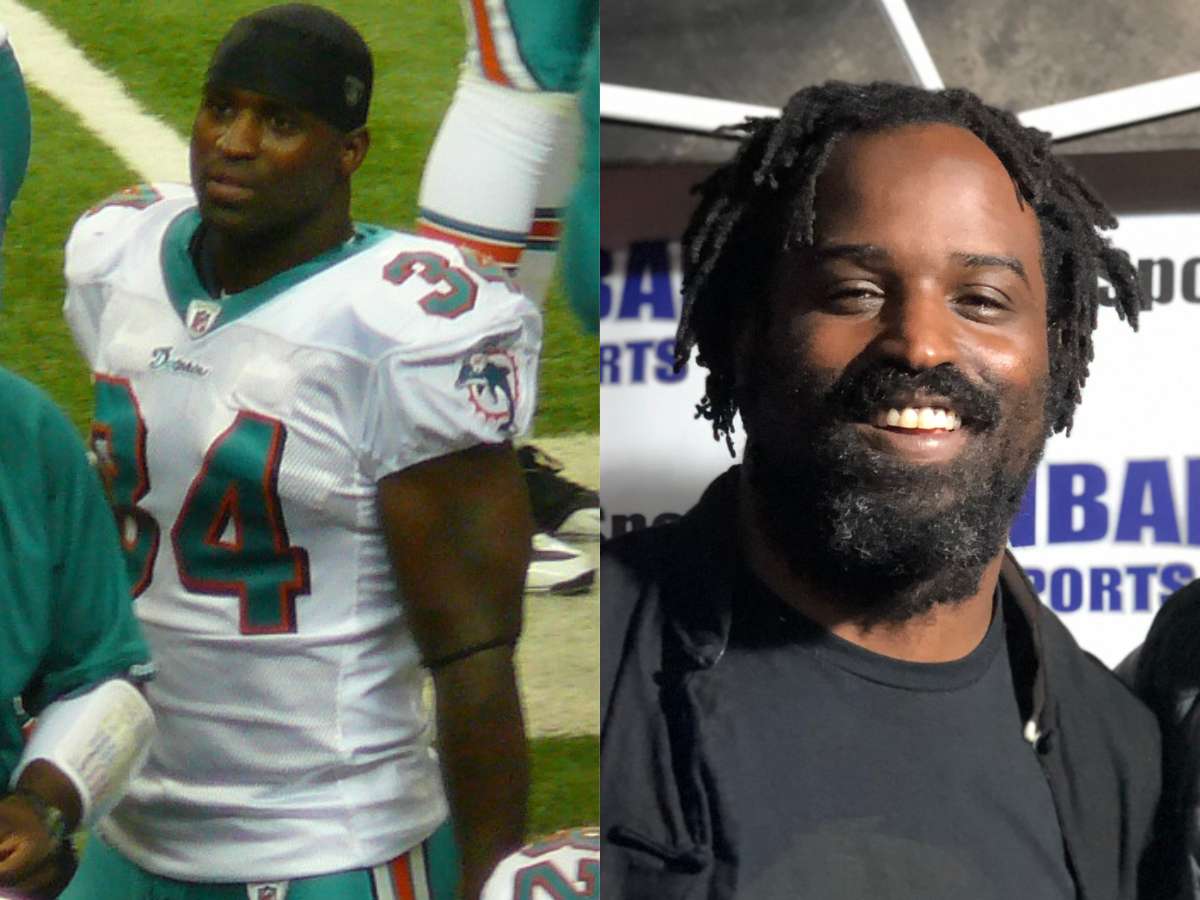
Though this may be a disputed pick to show up in the top 20, it's hard to dispute that he never delivered the value to the Saints who drafted him. Head Coach Mike Ditka famously gave up his entire draft to trade up to get the Texas Longhorn legend. While it's true that he had a few strong seasons in his career and led the league in rushing for Miami one season, he was only in New Orleans for a short three-year period.
Despite that, he managed to make three Pro Bowls and was a two-time All Pro. He remains one of the most beloved players in Saints history, and his impact on the team is still being felt today. He's an example of why it's important for teams to never give up in the draft and always be willing to take chances on talented, young players.
Image via Chris J. Nelson, CC BY 3.0, via Wikimedia Commons; I Mertex I, CC0, via Wikimedia Commons
Dan "Big Daddy" Wilkinson
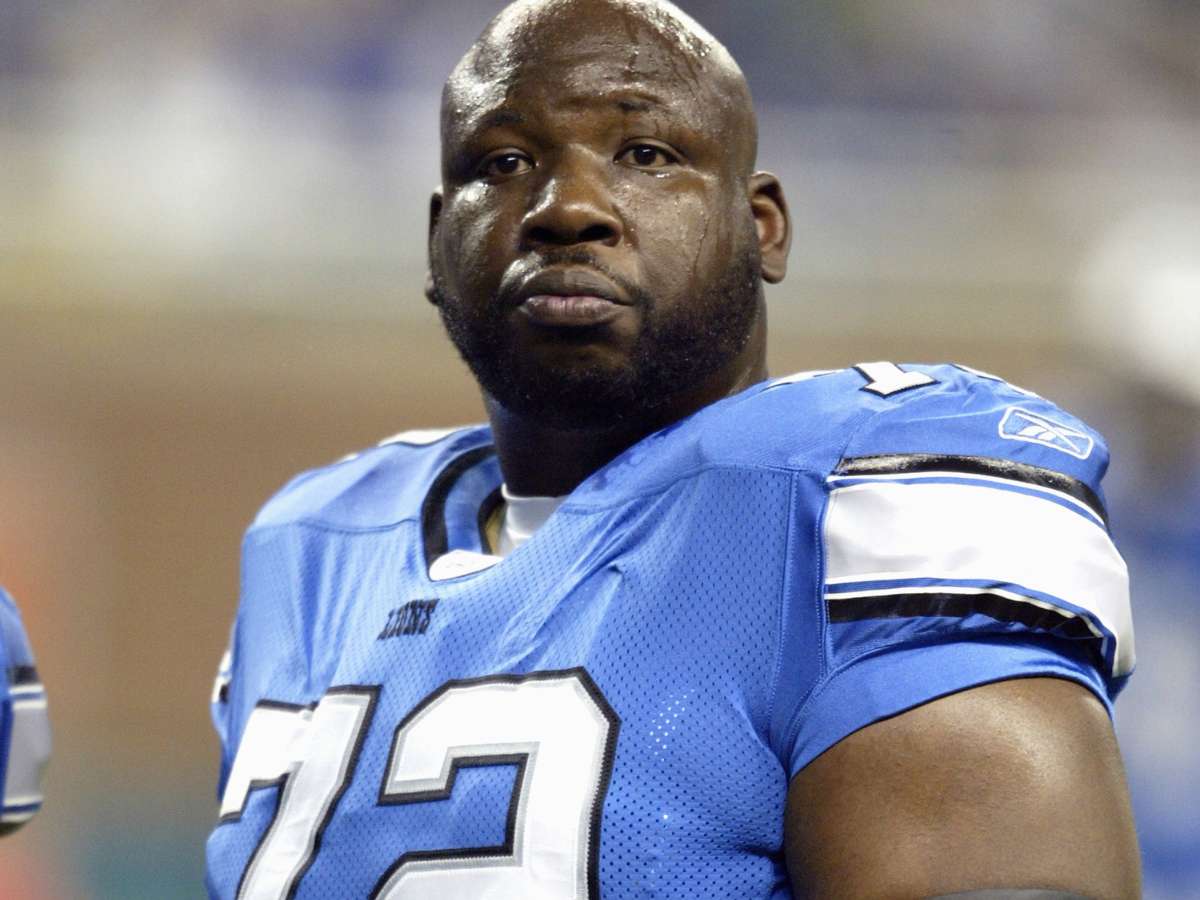
The #1 overall pick of the Bengals in 1994 out of The Ohio State University, Big Daddy never established himself as the defensive line force everyone expected. Some even thought he was the best defensive line prospect in the last decade and since Reggie White. Still, he never came close to those accolades. Even though he played for a long time, he belongs on this list as a former #1 overall bust!
Big Daddy was known for his size and strength but lacked agility. He could bull rush but had little ability to make counter moves or use finesse. His pass-rush skills were decent but not great. He was also often out of position due to a lack of understanding of the defensive schemes. Despite his failures, Big Daddy remains a fan favorite due to his great size and strength. He may not have had the career he wanted or deserved, but he still has earned recognition for being one of the best defensive lineman prospects ever.
Mike Mamula
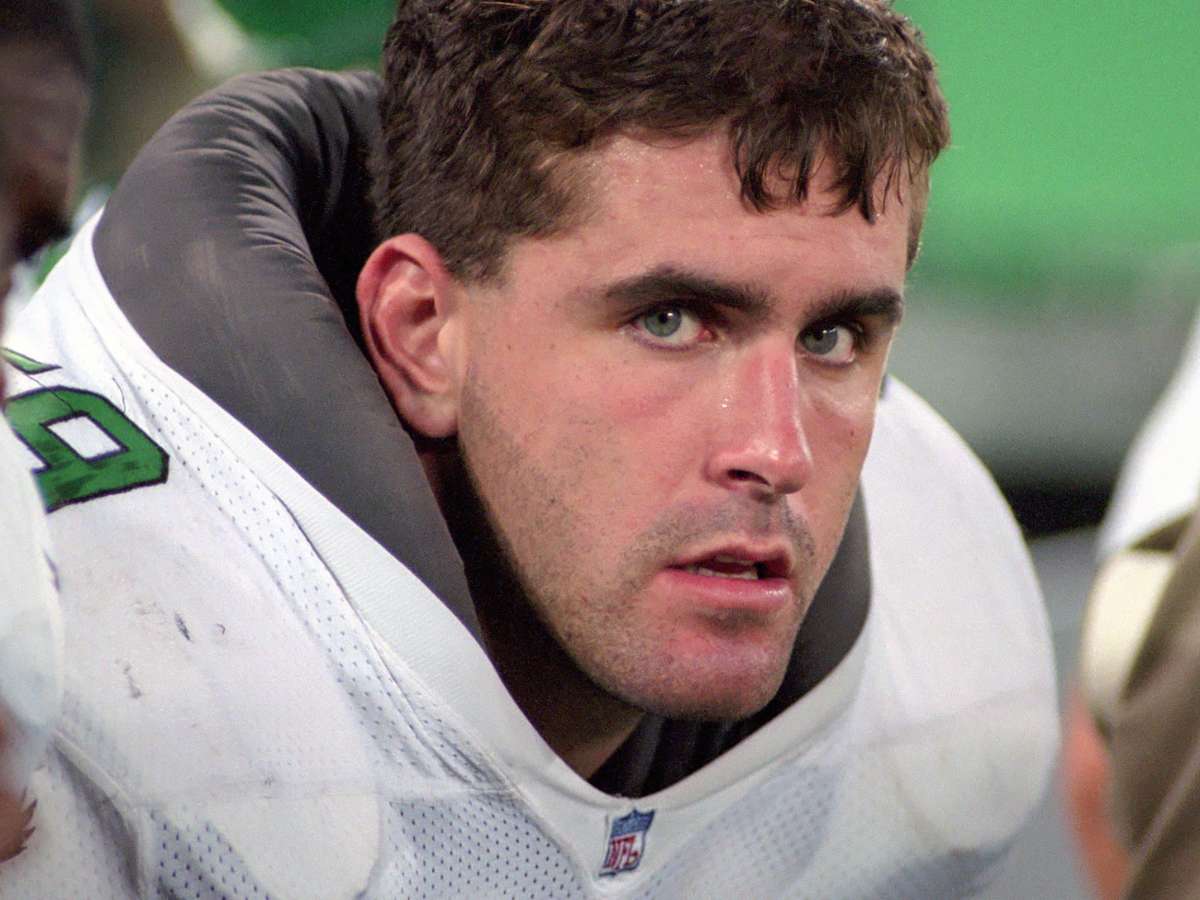
When people think of NFL draft busts, perhaps Mike Mamula doesn't come up initially. Still, he should be on this list. Taken seventh overall, this off-the-radar pick increased his draft stock by impressing scouts with his measurables at the NFL combine. So, the Eagles snatched him up and never saw the return on their high draft pick investment. He never established himself as an elite defensive player and lasted only five seasons. The Eagles traded up to get him and could have had an elite defender like Warren Sapp, who went #12 that year. Dubbed “The Workout Warrior”, Mamula deserves to be on this list. Even though he had success in college, his NFL career never showed much promise.
Mamula’s career is an example of why it’s important to look beyond the combined results and dig deeper into a player’s character. Scouting for football players isn't as simple as looking at their physical performance; some intangibles can’t be measured. Those intangibles—such as heart, determination, character, and work ethic—are just as important when assessing a player’s potential success at the NFL level. When it comes to evaluating players, scouts need to make sure they take into account the total package.
Darrius Heyward Bey

Another questionable pick by owner Al Davis and the Raiders, this speedster was surprisingly taken seventh overall by the Raiders out of Maryland in 2009. Never establishing himself as a #1 receiver on the Raiders, he has been with several teams since, mainly serving as a special teamer. Currently a free agent, this receiver was taken ahead of the likes of solid pros Michael Crabtree and Jeremy Maclin.
The 2009 NFL Draft was a controversial one for the Raiders, as many experts questioned their selection of this receiver. Although there were some flashes of potential from the player chosen seventh overall in 2009, his career never realized its full potential, and he bounced around the league. Now a free agent, it is unclear if this receiver will ever receive another opportunity to make an impact on the NFL.
Image via Jeffrey Beall, CC BY 3.0, via Wikimedia Commons; borman818, CC BY 2.0, via Wikimedia Commons
Rashaan Salaam
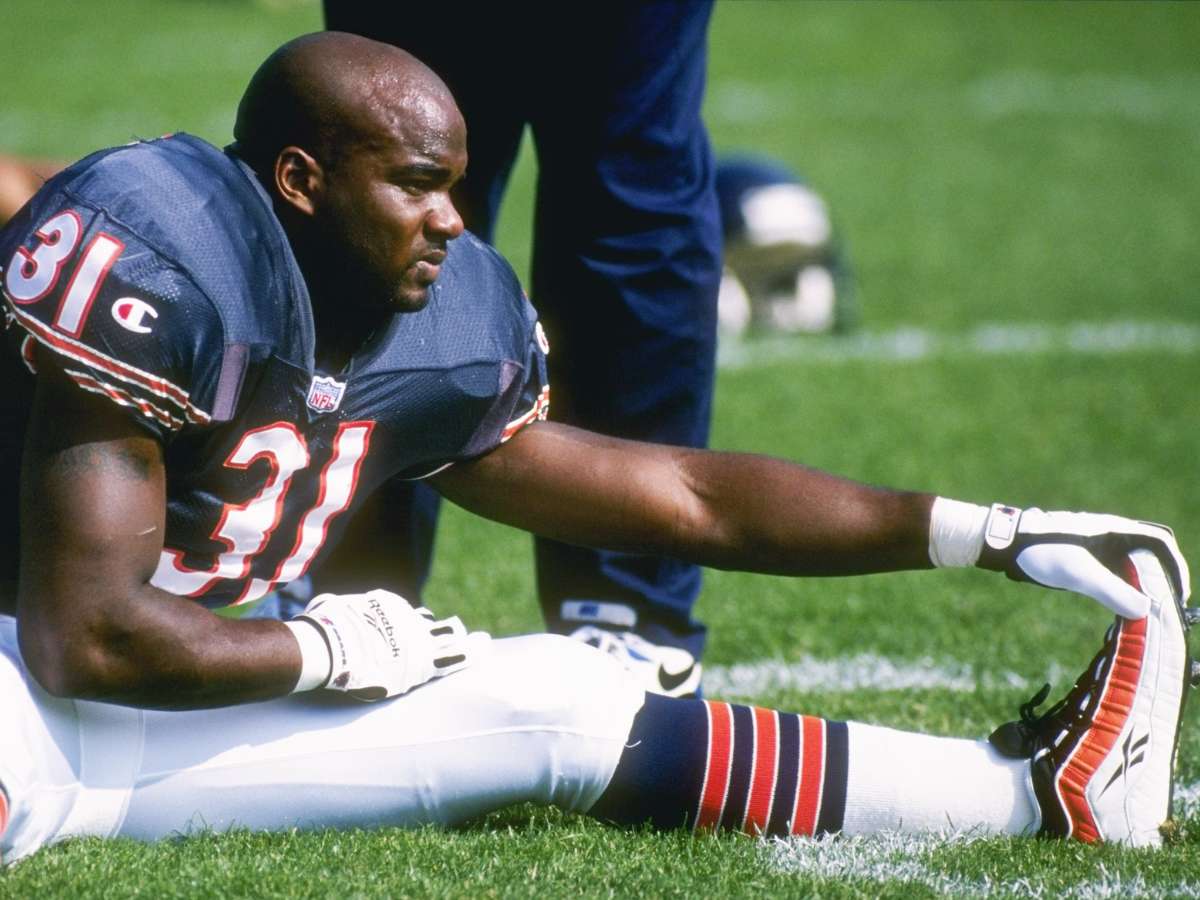
This first-round draft pick (21st overall) of the Bears never saw the same success he had in Boulder, where he was a 2,000-yard college rusher and Heisman Trophy Winner. Though he rushed for 1,000 yards as a rookie, becoming the youngest player to ever reach that number, injuries and drugs appeared to derail his career.
Sadly, he died of suicide in 2016. He was only 29.
Cade McNown
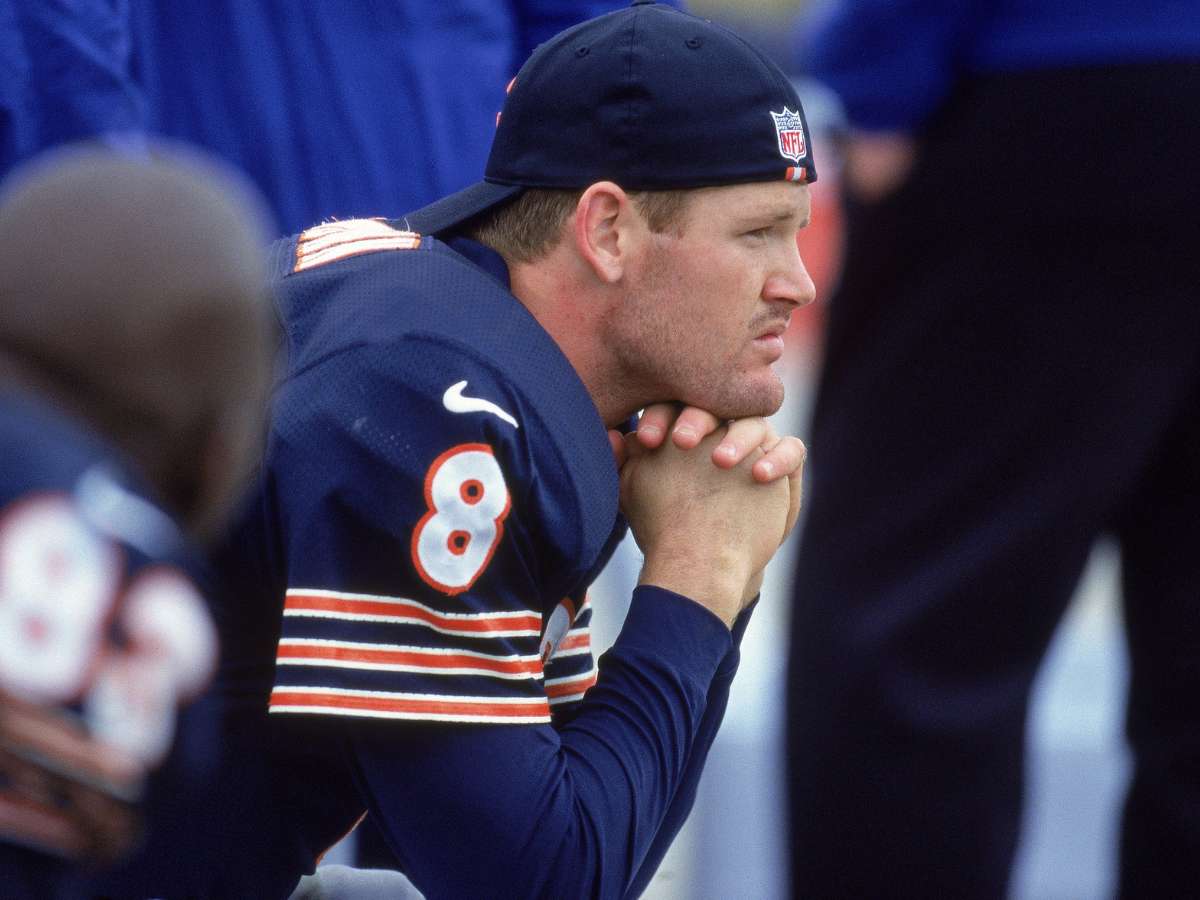
This UCLA signal caller was taken 12th overall in 1999 by the Chicago Bears. The lefty never established himself as a franchise QB in the NFL, and the Bears quickly parted ways with their disappointing draft pick.
Supposed to be part of a great 1999 QB class that Included others like Tim Couch (see above), and Donavon McNabb, Cade McCown belongs on this list as well.
Rick Mirer
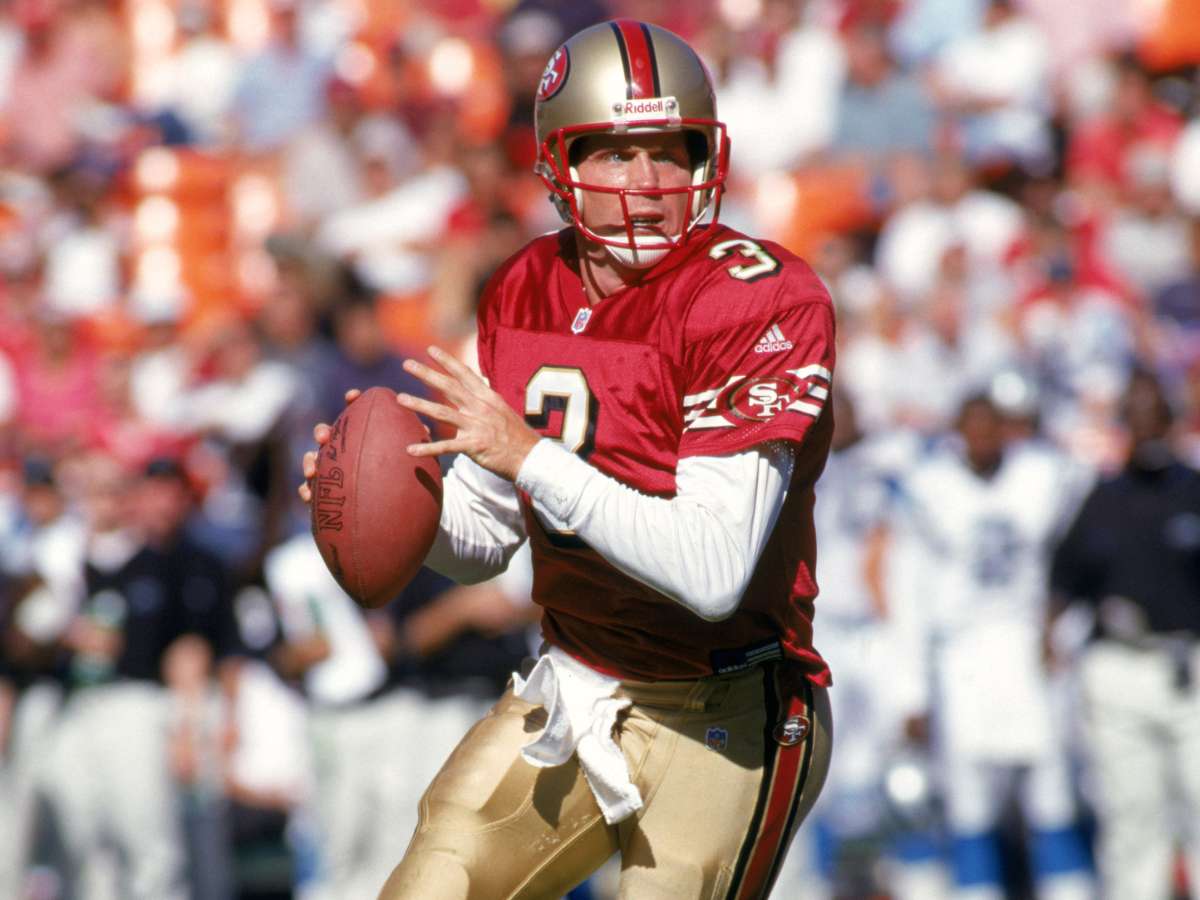
The four-year starter at Notre Dame was taken second overall by the Seattle Seahawks in 1993. Though he “enjoyed” a long 12-year NFL career, this former golden domer never lived up to the promise that he had when he left school. Sporting a 24-44 record as a starter, he certainly belongs on this list.
Additionally, the four-time Pro Bowler’s career is one of the most disappointing in Notre Dame football history. He will forever remain an enigma and has yet to be inducted into the College Football Hall Of Fame. In any event, his legacy as a Fighting Irish great remains intact.
David Carr
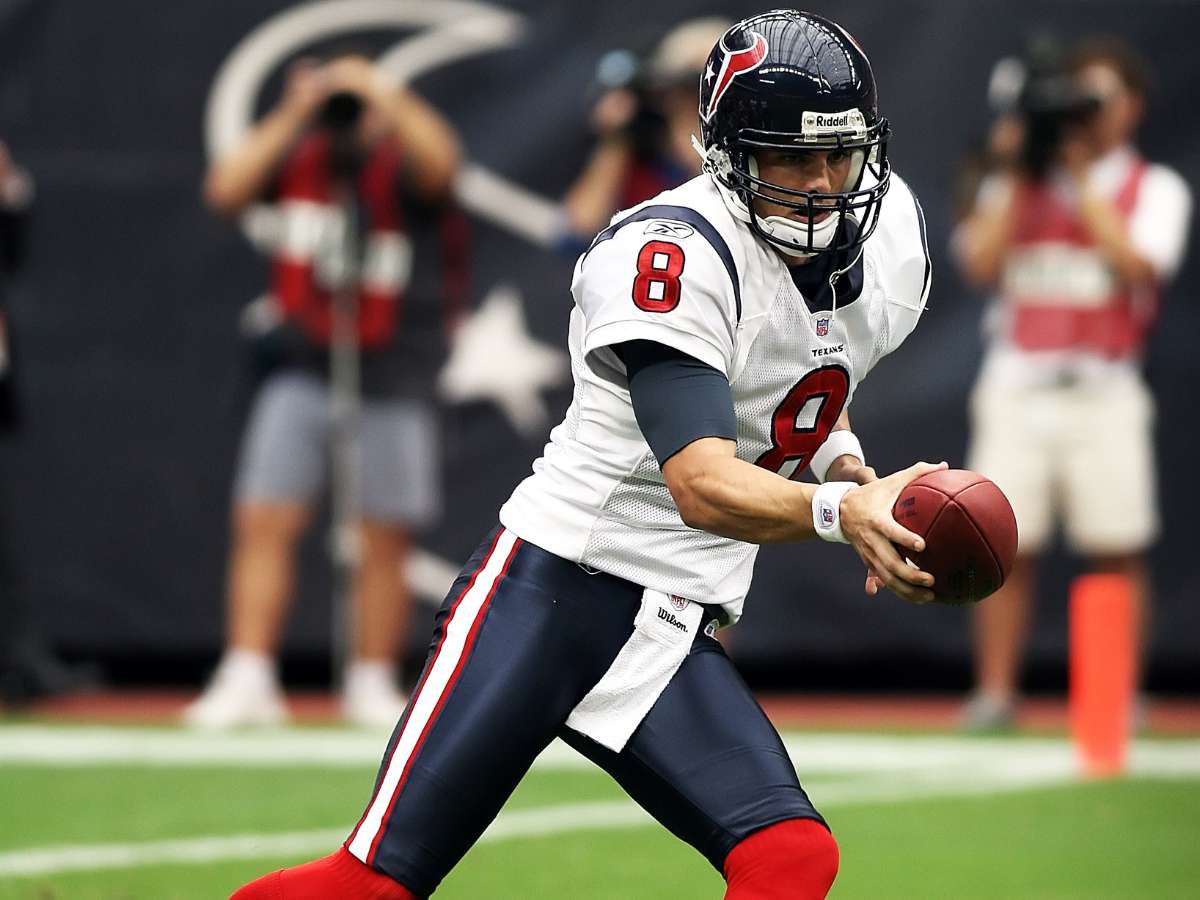
The first overall pick in 2002 and the first-ever pick for the new Houston Texans franchise, this talented signal caller out of Fresno state never really made a mark as a starting QB. To be fair, he was sacked a league record number of times his rookie year and didn’t have much of a supporting cast.
Still, he had a terrible record in his years with the Texans, but later became a capable backup to Eli Manning and others over his career. Not what you would expect from a #1 overall pick, though!
Mike Williams
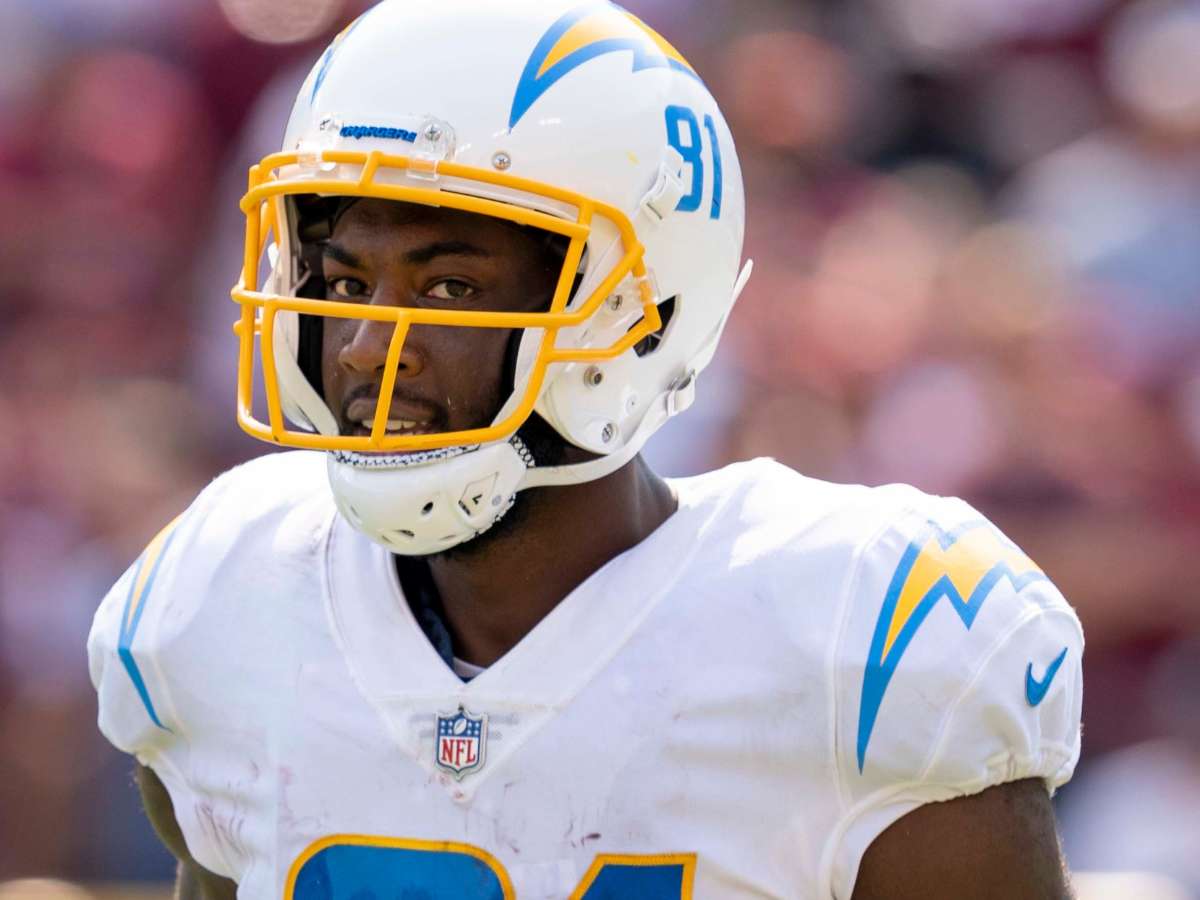
Detroit took this big receiver at #10 in 2005. He was the third receiver taken in the first round by the Lions in three years. This big, physical receiver never became a star in the league and retired in 2011. His size, speed, and physicality made him a dangerous weapon that was hard to defend against. He had some impressive games for the Lions but never reached the potential he was drafted for.
Unfortunately, his career ended without any major achievements. Despite this, Mike Williams remains an important part of Detroit's history and is remembered fondly by fans of Motor City. His legacy will live on in the memories of football fans everywhere. Thanks, Mike! Go Lions!
Charles Rogers
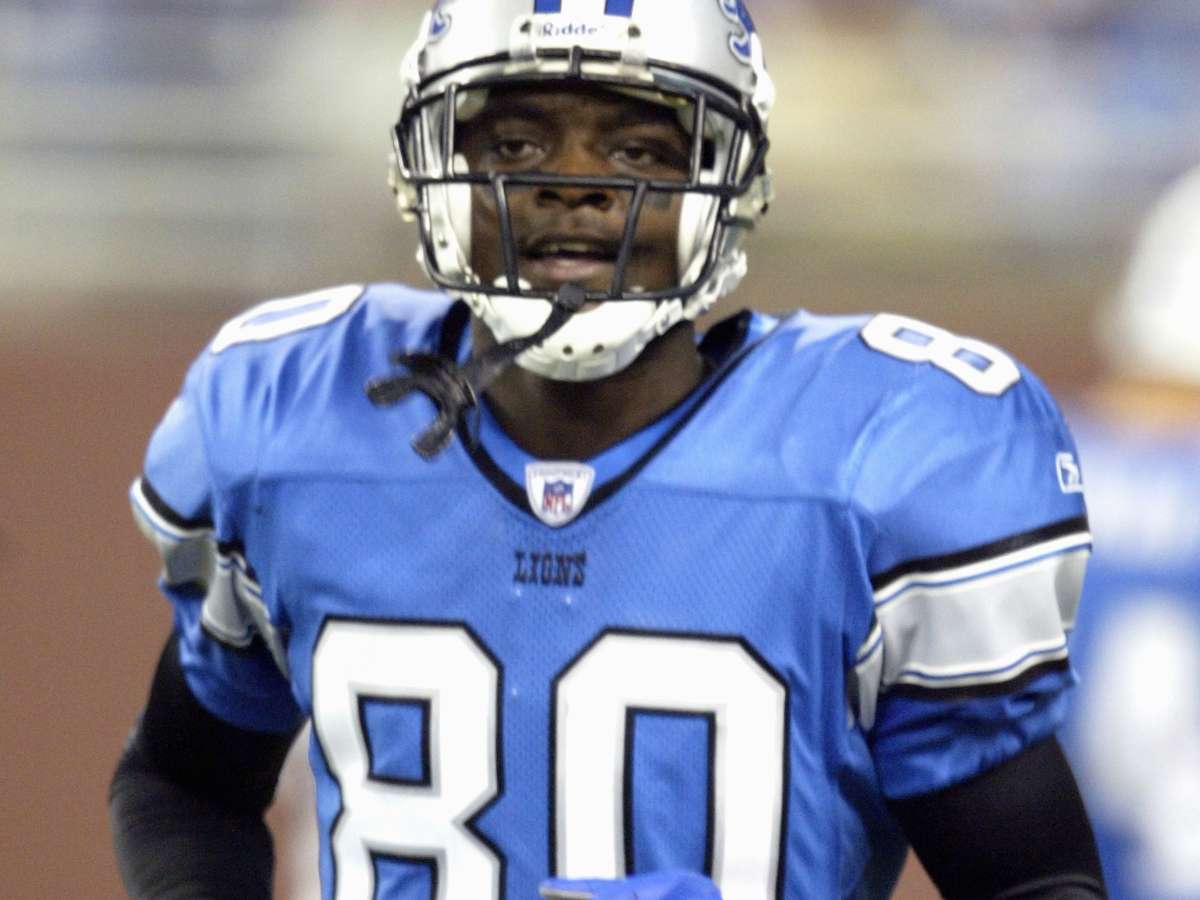
Can anyone see a theme here? If you are a skill position player and get drafted by Matt Millen and the Detroit Lions, you will not be successful. The second of three such players on our list, Rogers seemed to be a can’t-miss prospect as he was taken second overall out of Michigan State in 2002.
Still, he missed and never reached what thought could be his potential due to injuries and other issues off the field.
Sam Bradford
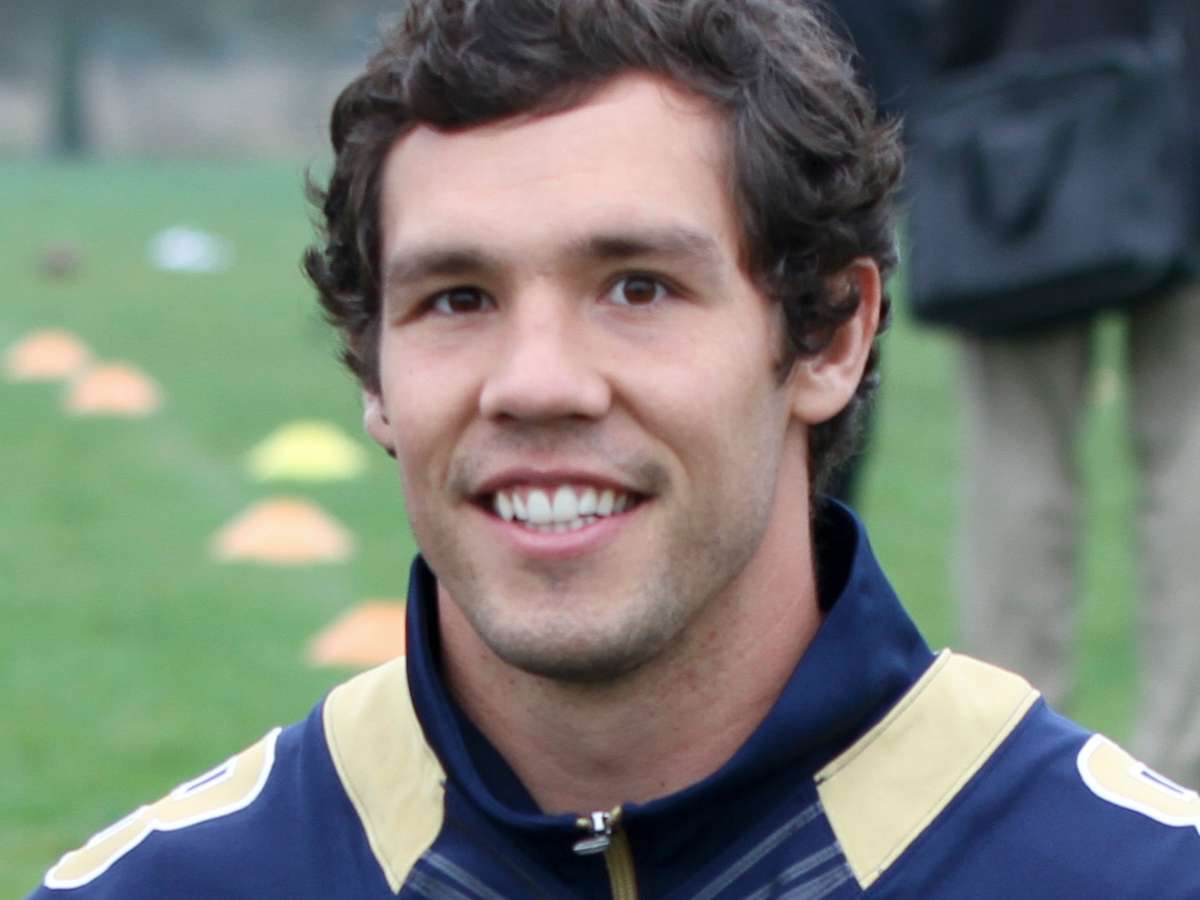
The Heisman trophy-winning and Oklahoma Sooner QB was the first overall pick in 2010 by the then-St. Louis Rams. He started off hot by completing an NFL record number of passes as a rookie.
Then, he suddenly became injury-prone. Suffering through injuries most of his career, the journeyman did not become the breakout start that many expected.
Vernon Gholston

The Jets took this OLB sixth overall in 2008 after a great season at The Ohio State University. Vernon Gholston was supposed to be a top-notch rusher and was expected to get after the quarterback, but this Jet never recorded a sack in the NFL. Despite being a top-six selection, Gholston was quickly labeled a bust and released by the team after just three seasons.
Gholston's failure to perform will always be remembered as one of the Jets' biggest disappointments in recent memory. While it's easy to point fingers at the front office for selecting him, the reality is that Gholston never lived up to the hype he was given coming out of college. He couldn't generate any pressure off the edge or consistently win his matchups, which you need in a 3–4 scheme.
Joey Harrington Jr.
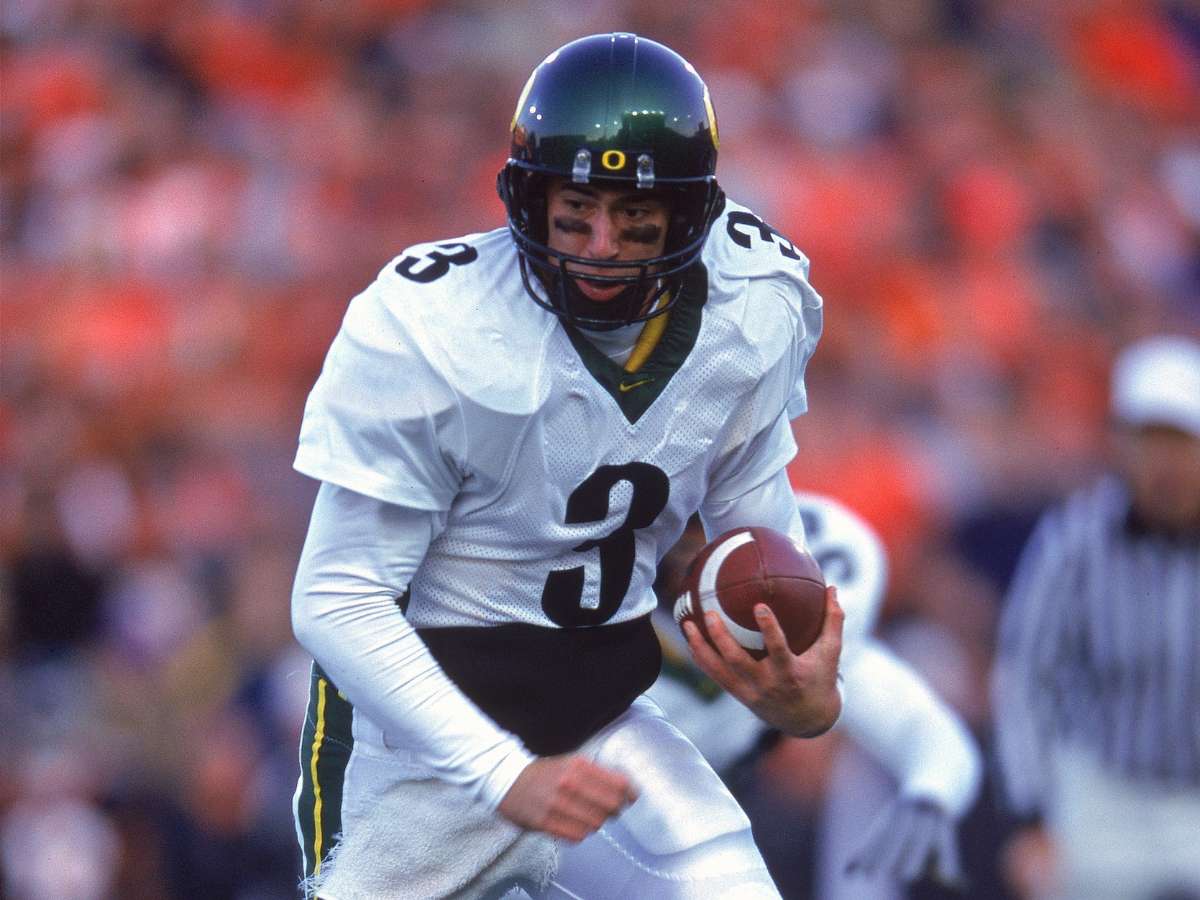
Perhaps we're being too hard on the Detroit Lions and former GM Matt Millen here, but as the third Millen draftee on this list, it's clear to see why Millen did not have a successful, if not long, run in Detroit. Harrington was projected to be a franchise QB when he was taken third overall out of Oregon in 2002.
Still, success was hard to find and he only lasted several years in the league, and only four with Detroit. Some blamed coaching and the organization for his lack of success. Still, as a third pick, he belongs on this list.
Akili Smith

Highly regarded out of Oregon, the Bengals drafted him third overall in the 1999 draft. Only fellow signal callers Tim Couch and Donovan McNabb were drafted before him that year. In four years with the Bengals, he started only 17 games and was said to not have worked hard enough on learning the playbook to be successful. He also had stints in NFL Europe and the CFL in his underwhelming career.
The Bengals released him in 2003. Since then, he has been making a living as a radio and TV analyst. His story is a reminder of how difficult it is to make it as an NFL quarterback.
Tim Couch

This Heisman Trophy-Winning QB was taken first overall by the longtime-losing QB-searching Cleveland Browns in 1999. Though he did manage to help lead the Browns to the playoffs, he only lasted five years for the team that took him #1 overall.
Even though he does belong on this list, he did marry a Playboy Playmate (Heather Kozar), so at least he has that going for him.
Trent Richardson
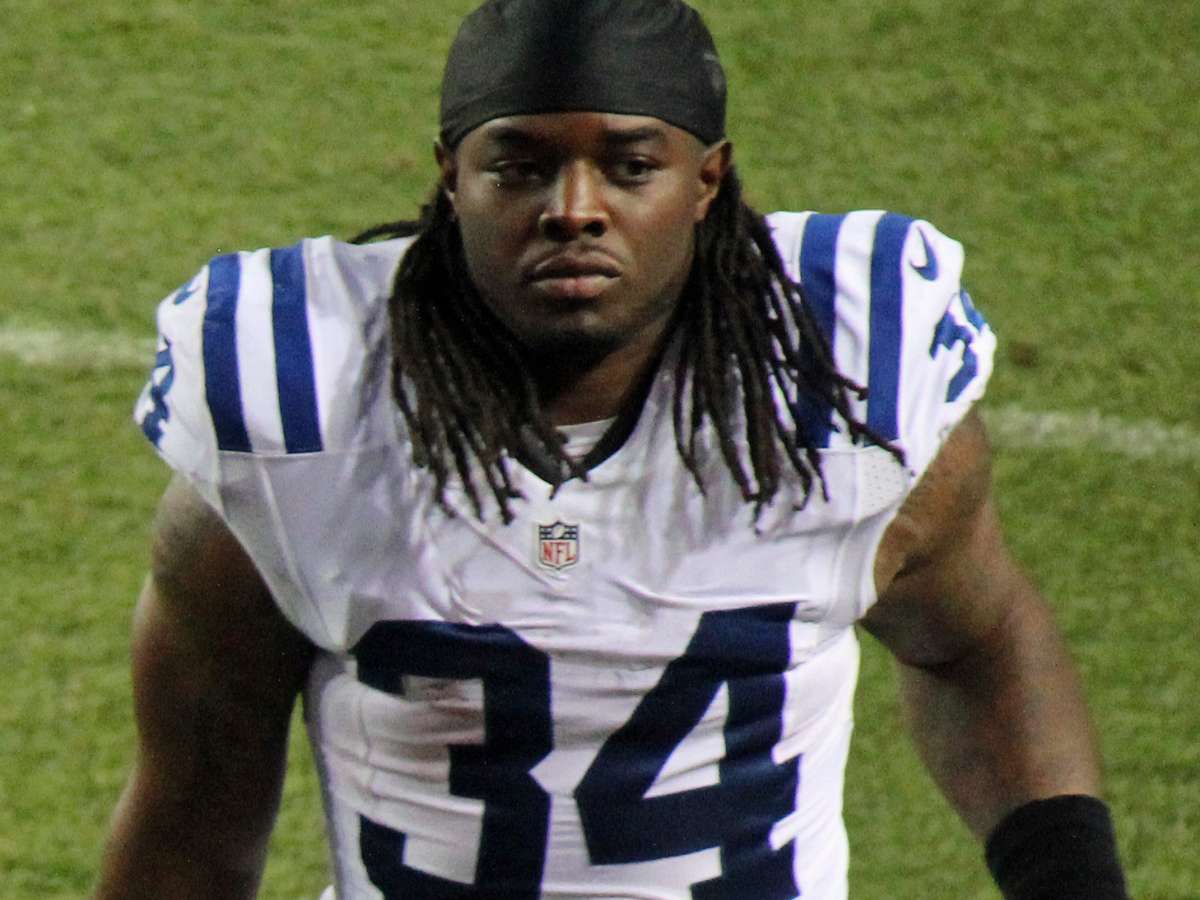
Surprisingly out of the league already, this Alabama Heisman Trophy Winner was taken third overall by Cleveland in 2012. Showing some initial promise, this quickly fizzled out and he was traded away to Indianapolis within a couple of years. He didn't stick there either and was let go and never caught on with anyone else.
Because many considered him the best running back prospect in a decade, and he never took off in the NFL, he deserves to be high on this list.
Tony Mandarich

This unbelievably dominant college left tackle out of Michigan State was taken #2 overall by the Green Bay Packers in the 1989 draft. Also playing for the Colts throughout his seven-year career, “The Incredible Bulk” never lived up to the promise of his hype (and Sports Illustrated Cover). To add insult to injury, he was the only player picked in the top five that year that isn't in the Pro Football Hall of Fame.
Troy Aikman was taken first, then Mandarich, then Barry Sanders, Derrick Thomas, and Deion Sanders. Do you think the Packers would have rather taken one of those guys? No doubt!
Ki-Jana Carter
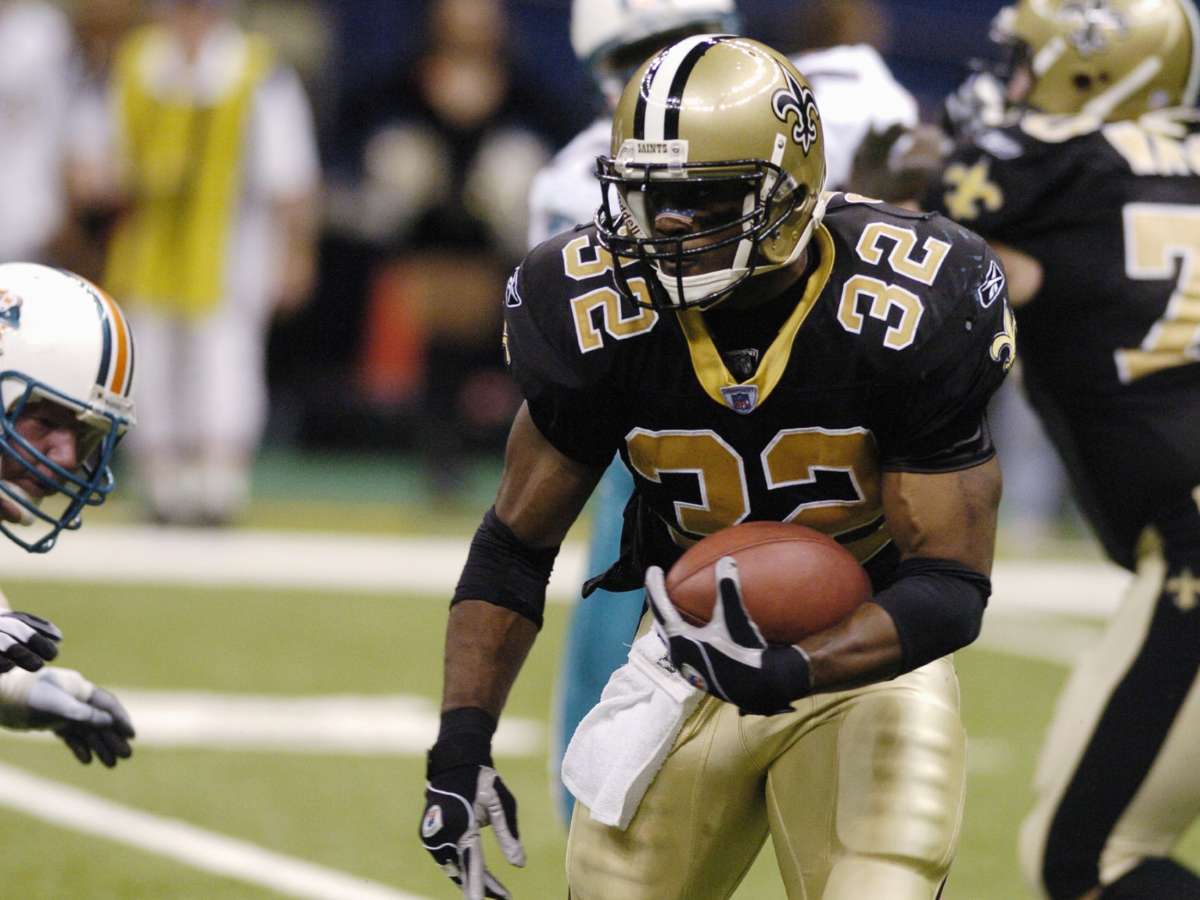
Selected #1 overall in the 1995 draft out of Penn State, this talented college running back never reached his potential in the NFL. He struggled with injury problems in his short career and never became the perennial 1,000 yard back that many thought he would be.
To make matters worse, the Bengals selected Carter ahead of several Hall of Famers to be, including Warren Sapp and Derrick Brooks. Still, HOF RBs Curtis Martin and Terrell Davis were taken in this draft! Ouch!
JaMarcus Russell

A physical presence and strong-armed QB out of LSU, the aging and increasingly incompetent Al Davis of the Raiders took Russell #1 overall in the 2007 draft. He quickly developed a reputation for being lazy and was out of the league very quickly.
Compiling only a 7-18 record as a starter, the Raiders gave up on him in 2010. Few would argue that he belongs near the top of this list!
Ryan Leaf

As upset as Chargers fans were about the bust that Ryan Leaf was, is it possible that Colts fans were as happy that their franchise selected Peyton Manning #1 in the 1998 NFL draft, instead of Leaf? At the time, it was considered a toss up about who was the better prospect, Manning or Leaf. The Colts chose wisely at #1 and elected to draft the future Hall of Famer, Manning, who started over a decade run at the helm for his team.
Leaf, however, struggled in San Diego, and ultimately had substance abuse problems. He belongs high on this list since he didn’t reach what many considered his high potential.
Johnny Manziel

Johnny Manziel was a hot commodity coming out of his sophomore year at Texas A&M, winning the Heisman Trophy as a freshman, along with a slew of other awards. The Cleveland Browns believed that Manziel could carry the promise of his college career into the NFL, but he was troubled by the demons of his party lifestyle.
Substance abuse and run-ins with the law cut his NFL career short, and he was never able to live up to his potential. Manziel played in the Canadian Football League, the Alliance of American Football, and a league called Fan Controlled Football, but he was never able to sustain a professional career.
Tim Tebow

Tim Tebow was an electrifying college quarterback at the University of Florida, winning a Heisman Trophy and two national championships with the Gators. Tebow was also as well known for his outspoken faith as he was for his on-field abilities.
However, Tebow’s dominance didn’t translate into the NFL. He played a handful of seasons and bounced around several teams, but he never caught on as an effective NFL quarterback. A stint in his mid-30s playing tight end for the Jacksonville Jaguars and his former college coach Urban Meyer only lasted three months, resulting in his being cut during the preseason.
Danny Wuerffel
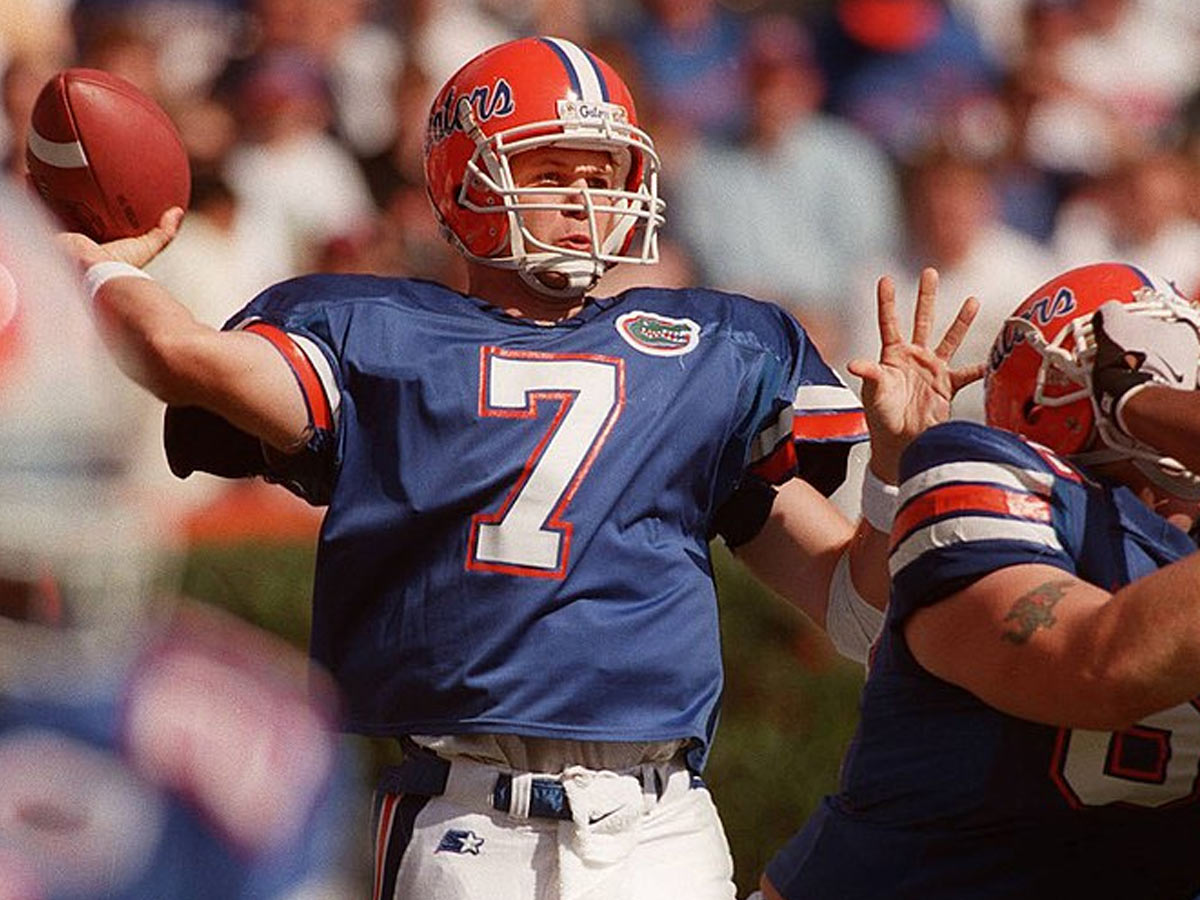
Danny Wuerffel was dominant as Florida Gators quarterback in the mid-1990s. He led the team to its first national championship his senior year and won the Heisman Trophy. Needless to say, NFL scouts hoped that his talent would translate into NFL success.
Wuerffel played quarterback for the New Orleans Saints for three seasons but never quite caught on as a successful NFL quarterback. He did win a World Bowl championship for NFL Europe’s Rhein Fire and played as a backup quarterback for a couple of additional seasons, but he couldn’t sustain an NFL career. He retired from professional football in 2004 at age 30.
Gino Torretta
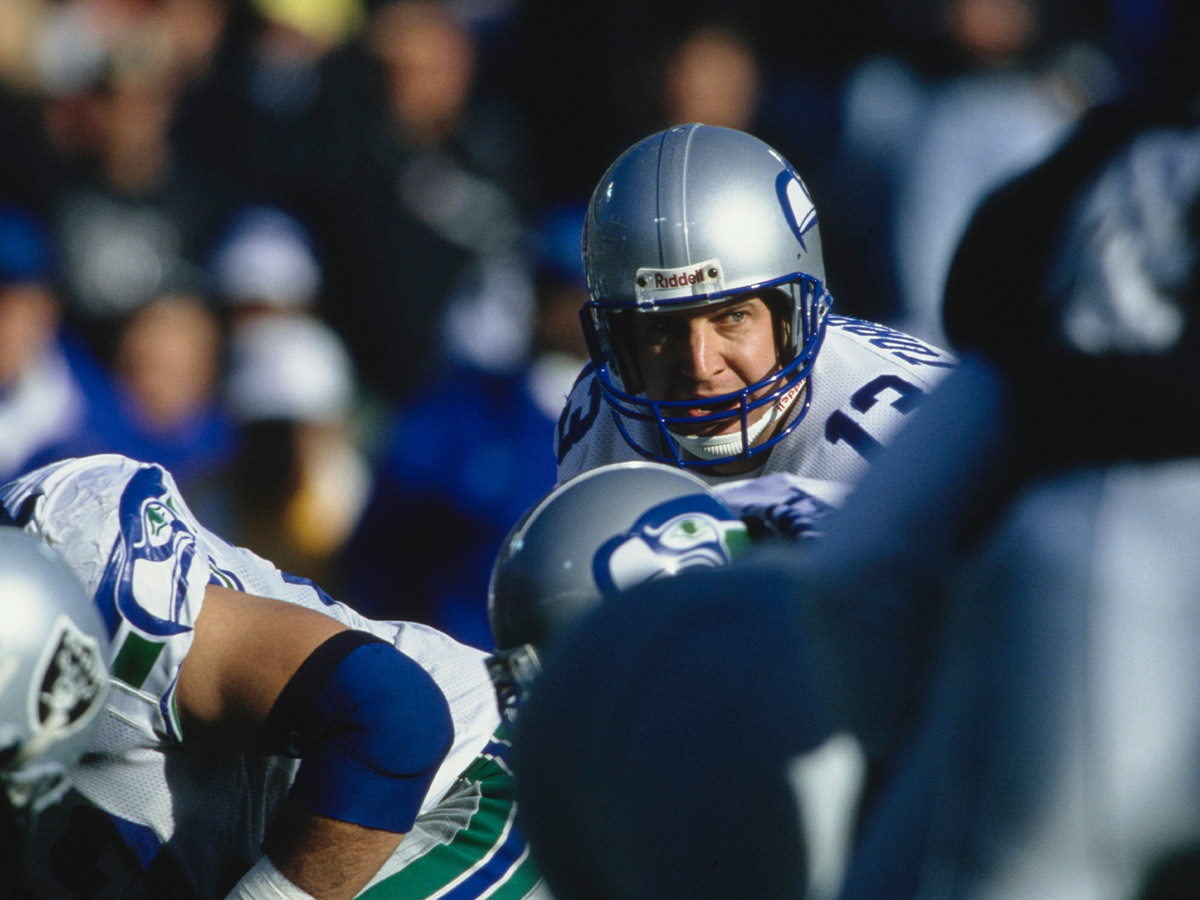
Gino Torretta won a pair of national championships with the University of Miami and won the Heisman Trophy his senior year. He played into the team’s “bad boy” image, but he backed it up on the field. However, NFL teams began to have their doubts about Torretta as the draft approached and he fell to the seventh round.
Torretta bounced around five teams in five seasons, serving as a backup, with a short stint in NFL Europe breaking up his career. He only played in one NFL game, but he was able to throw a touchdown in that one game. He retired from professional football in 1999 but later became a financial expert and satellite radio personality.
Eric Crouch
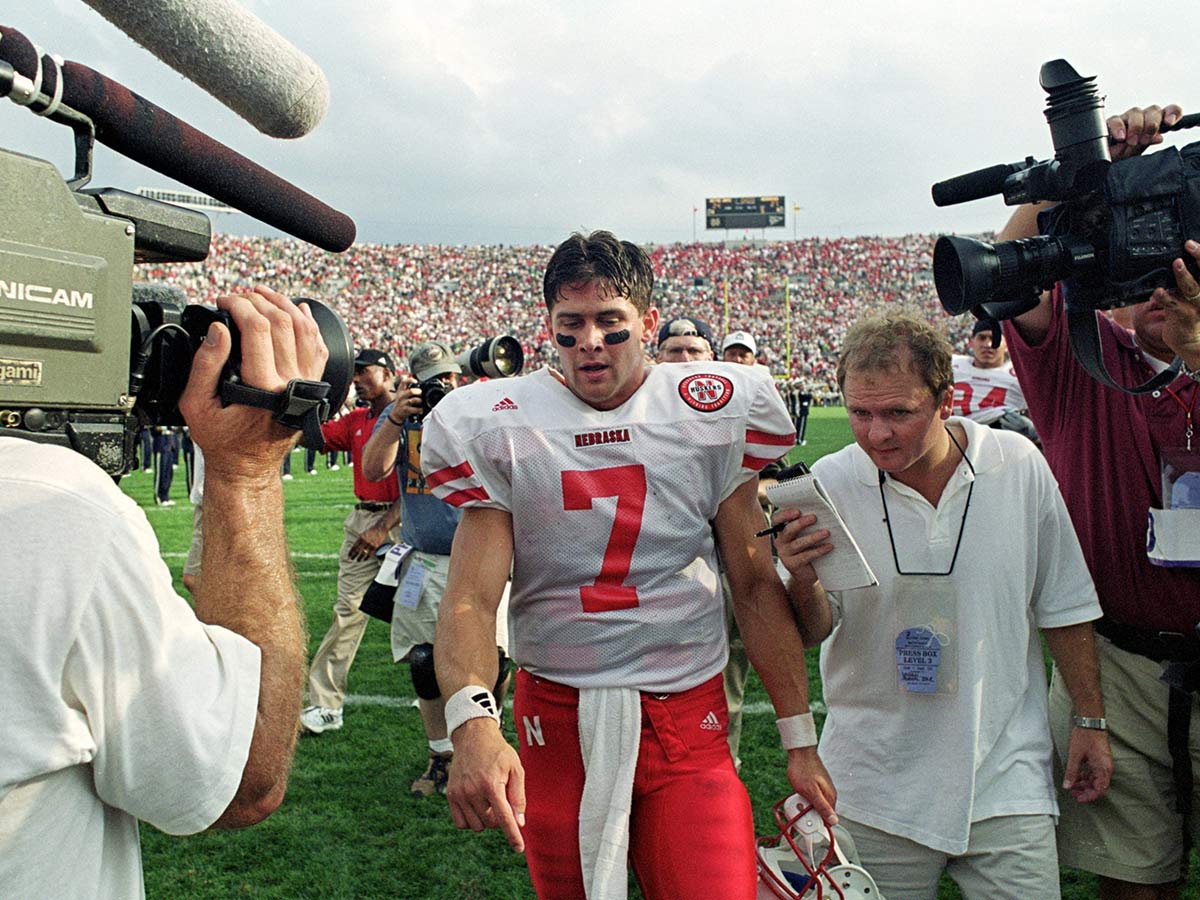
Eric Crouch was a backup quarterback when the University of Nebraska won its 1997 national championship and came within one game of winning one of his own as a starter. He won the starting position by taking over for a walk-on with the unusual name of Monte Christo. Crouch did take home the Heisman Trophy in 2001.
Professional football wasn’t kind to Crouch. Teams thought he was too short to play quarterback, and he transferred to safety. He bounced around between the NFL, NFL Europe, the United Football League, the All-American Football League, and the CFL before finally retiring in 2012.
Tim Biakabutuka

Tim Biakabutuka had the immense honor of being the first player born in Zaire (now the Democratic Republic of the Congo) drafted into the NFL. After three stellar seasons at the University of Michigan, he went in the first round to the Carolina Panthers.
Biakabutuka played for the Panthers for five seasons, and he rushed for fewer yards in five NFL seasons than he did in three seasons at Michigan — two of them as a backup. With the Panthers, he never played more than 12 games a season, which is rare for a player who went eighth overall in the NFL draft.
Steve Spurrier
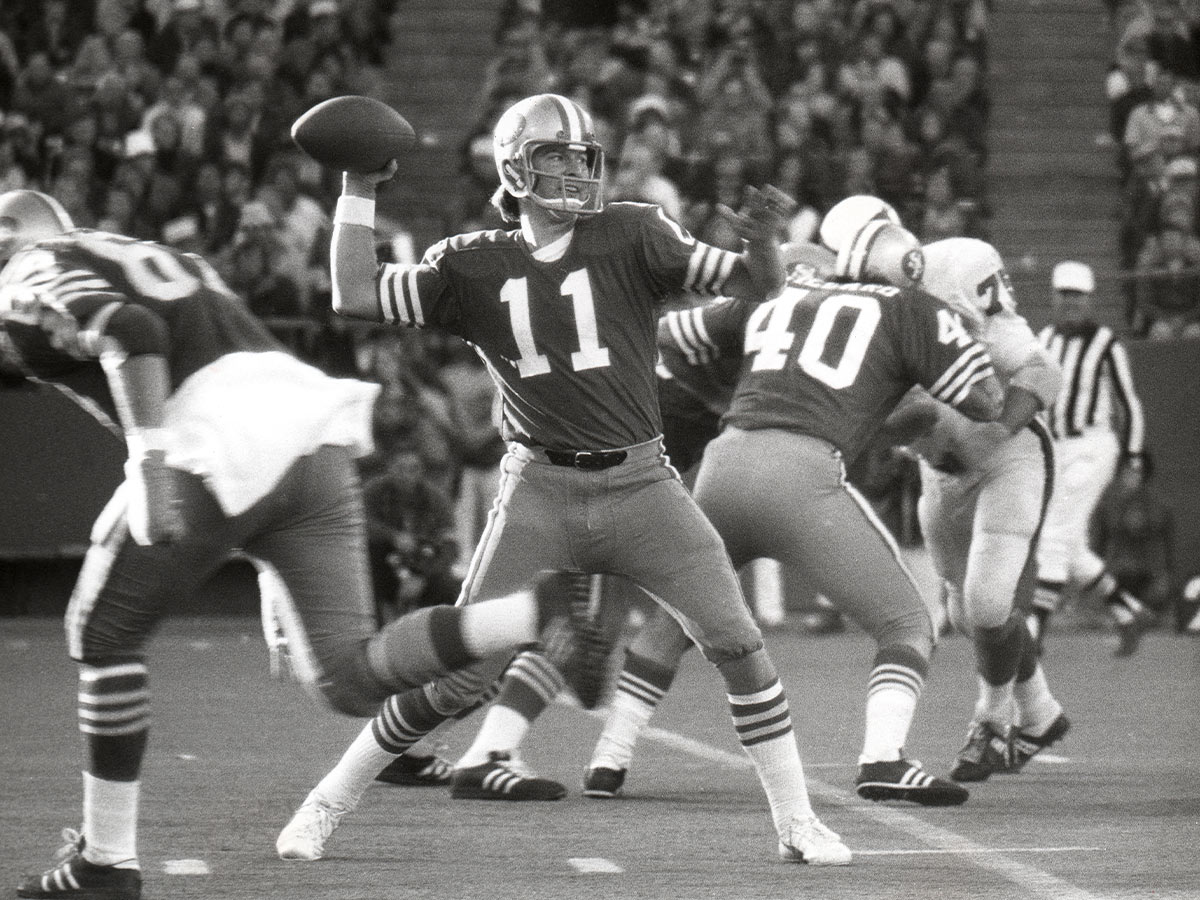
Steve Spurrier has a legendary reputation as a college football coach at the University of Florida and the University of South Carolina, but he was also a stellar quarterback at Florida, winning the Heisman Trophy in 1966. What a lot of people forget — and Spurrier would probably like to forget — is that he quarterbacked for nine years in the NFL.
Spurrier was the third overall pick in the 1967 NFL/AFL draft, and he played for the San Francisco 49ers, where he rarely played at all, much less started. But his most infamous season was his last. In 1976, he became the starting quarterback for the expansion Tampa Bay Buccaneers, which went 0-14 with Spurrier as quarterback. Spurrier’s bad luck in the NFL continued with two disappointing seasons as head coach of the Washington Redskins in 2002 and 2003.
Kenneth Sims
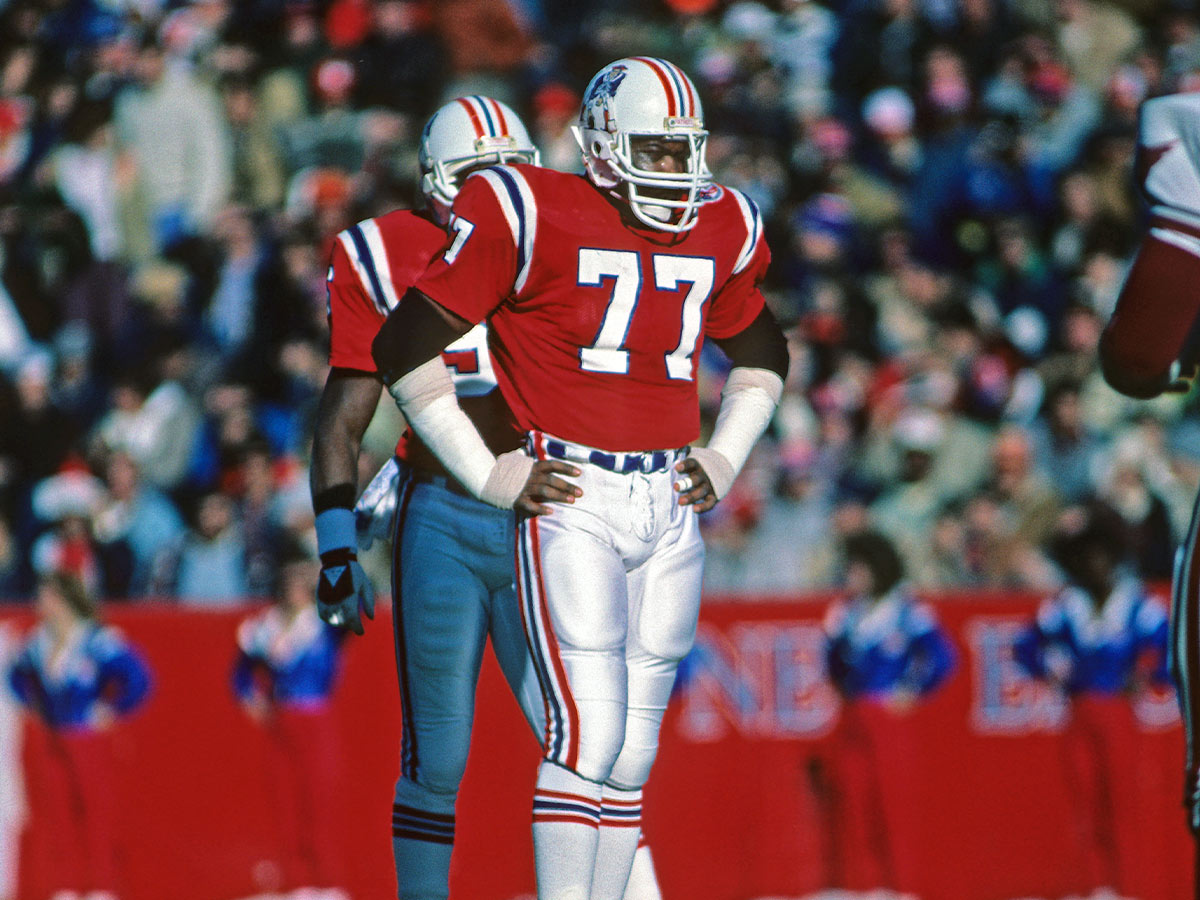
Kenneth Sims was a standout for the University of Texas on the defensive line, with 131 tackles and armloads of awards throughout his college career. He helped the Longhorns finish second in the polls his senior year, the team’s highest ranking in over a decade. All of these accomplishments led to the New England Patriots picking him first overall in the 1982 NFL Draft.
However, Sims struggled in professional football, with only 17 sacks over eight years in the league. His only complete season came in 1984, and a myriad of injuries and struggles with drugs and alcohol limited his effectiveness and cut his career short.
Archie Griffin
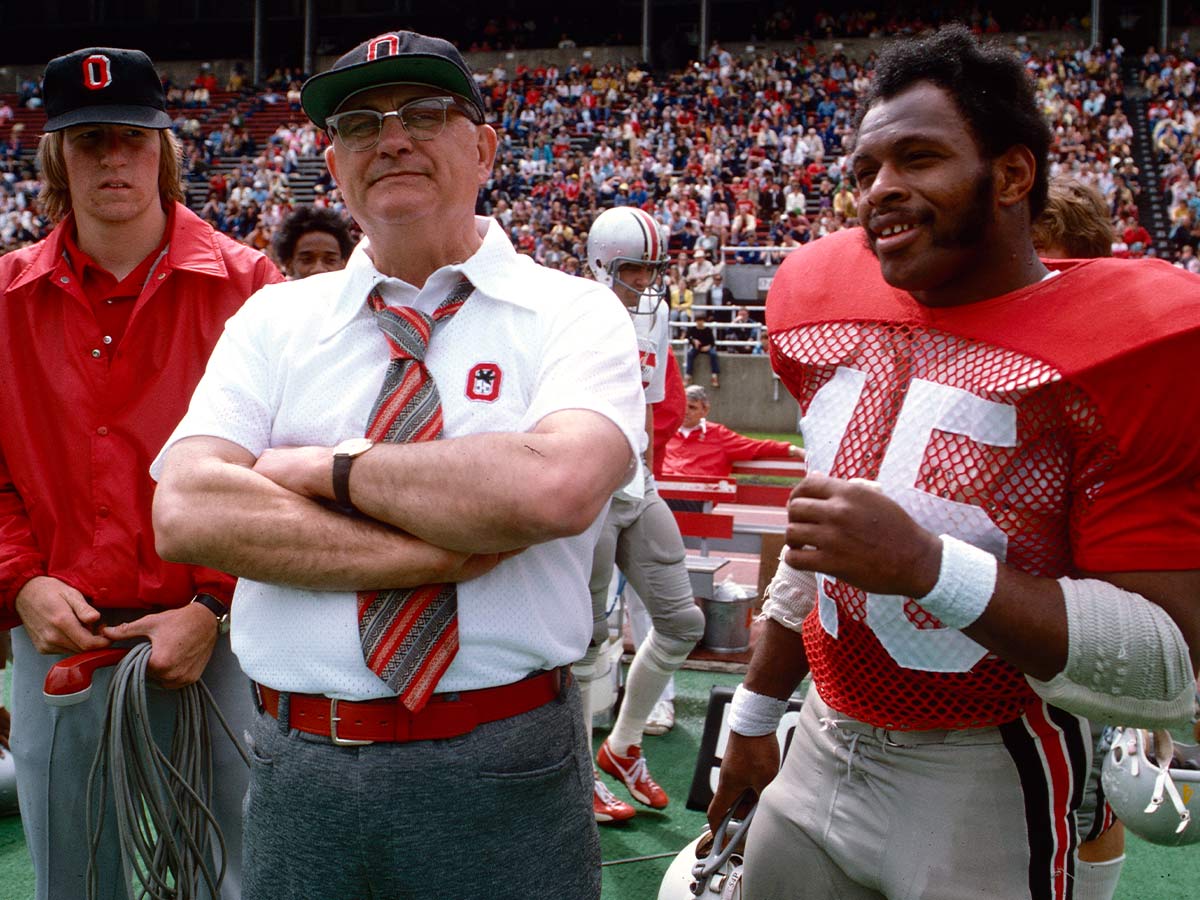
It would stand to reason that one of the most decorated football players of all time — the only player to win the Heisman Trophy twice — would have a stellar career in the pros. Archie Griffin, Ohio State University’s storied running back, rushed for 5,589 yards and 26 touchdowns in a career that college football players everywhere dream of, and the Cincinnati Bengals drafted him in the first round in 1976.
Unfortunately, Griffin wasn’t able to translate his college stardom into NFL success. In seven seasons, he only rushed for 2,808 yards and seven touchdowns. He played in Super Bowl XVI with the Bengals but only had one carry. A brief stint in the United States Football League failed to generate success as well.
Ron Dayne
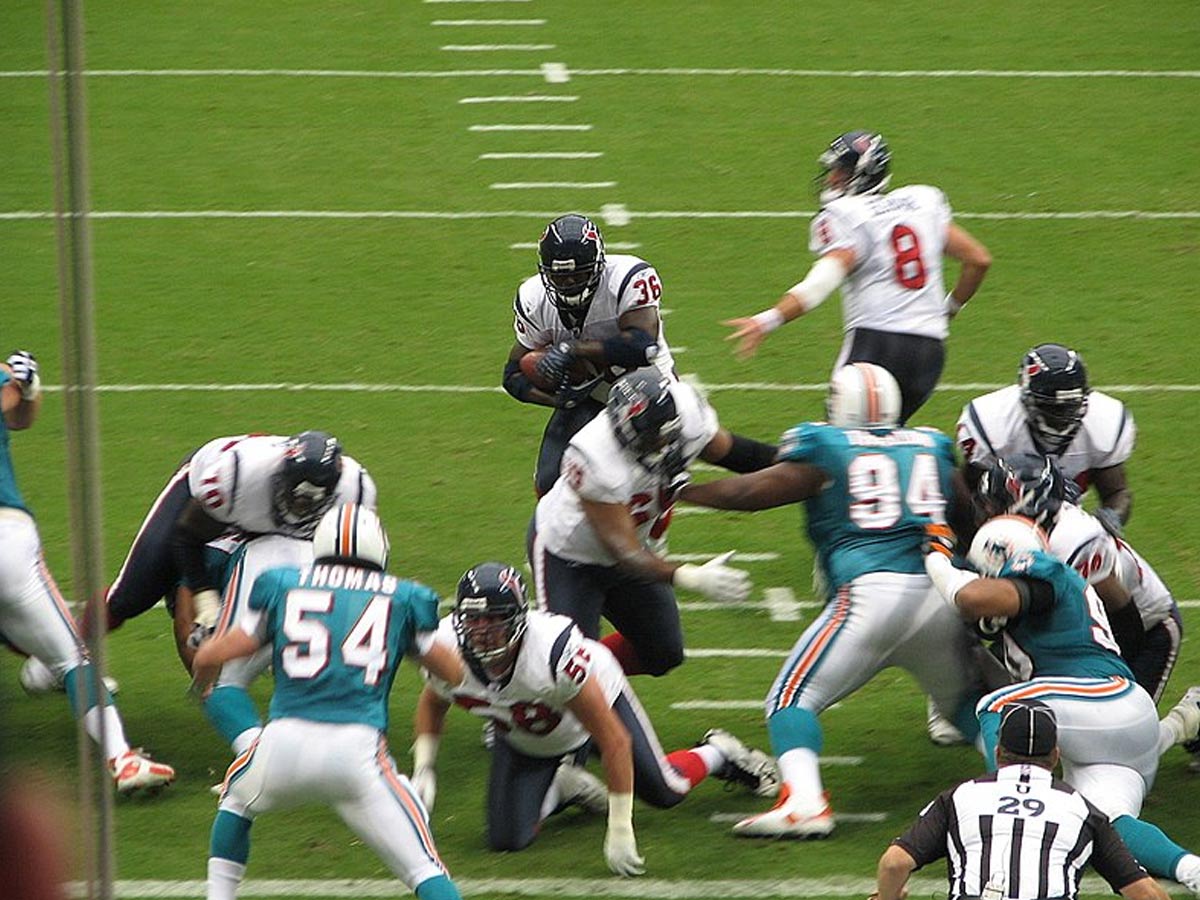
As a running back for the University of Wisconsin, Ron Dayne was the last Heisman Trophy winner of the 20th century, in addition to the other awards he won as a Badger. His 6,397 career yards stood as the all-time record for 16 years, and it’s still second all-time. So, it’s easy to see why NFL teams would be interested in him when the 2000 NFL Draft rolled around.
Dayne went 11th overall in that year’s draft, but his numbers as a pro didn’t measure up to his impressive college performance. In seven of eight seasons — he missed the 2003 season due to injury — he only managed to rush for 3,722 yards. He retired in 2007.
Matt Leinart
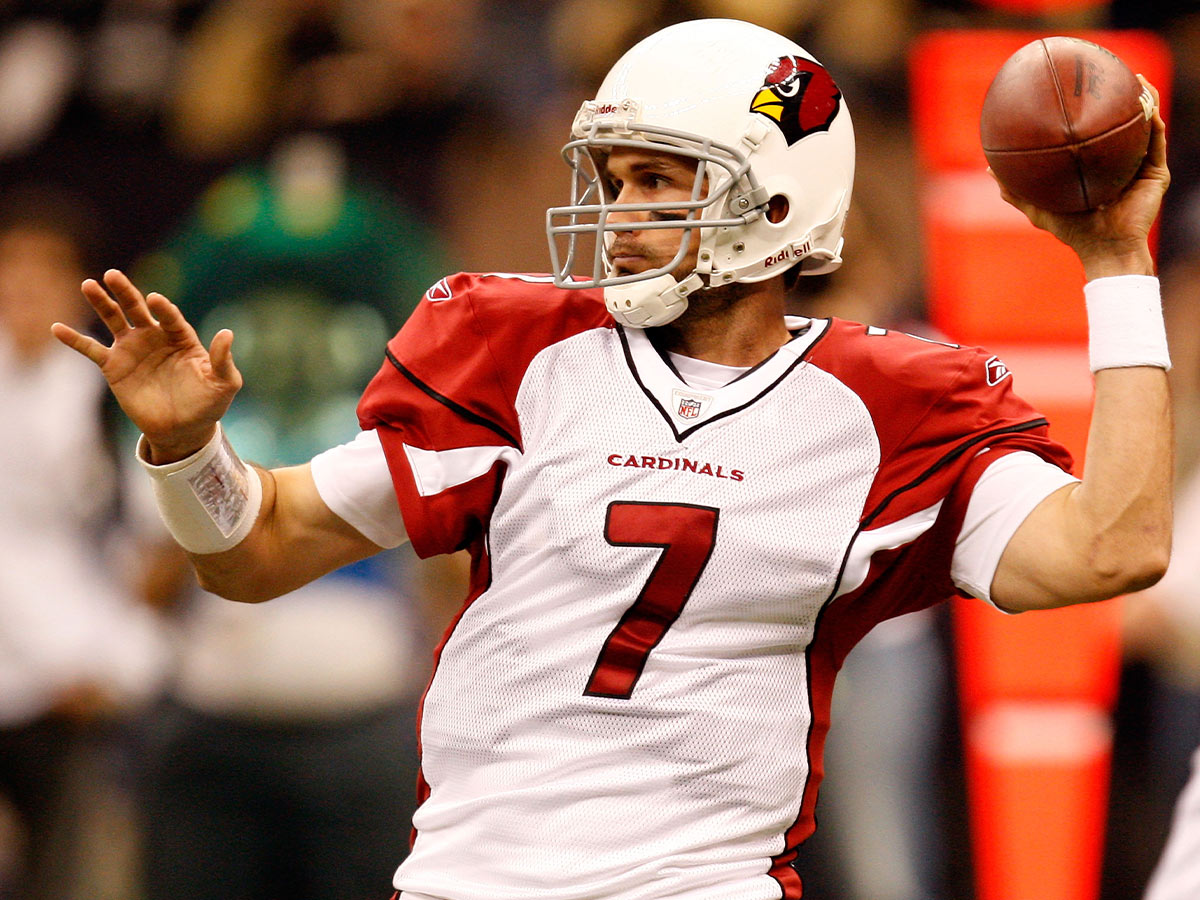
Matt Leinart was the darling of the college football world in the middle of the first decade of the 2000s. Fortunately, he had the chops to back it up, winning a Heisman Trophy and leading the University of Southern California to a national title in 2004. He and the Trojans came within one game of winning again in 2005 so, naturally, he was a hot commodity in the 2006 NFL Draft.
The Arizona Cardinals drafted and signed Leinart, but with every season came diminishing returns. He couldn’t capture the magic of his USC days, and he started fewer and fewer games every season before he retired in 2012 at age 29.
Steve Emtman
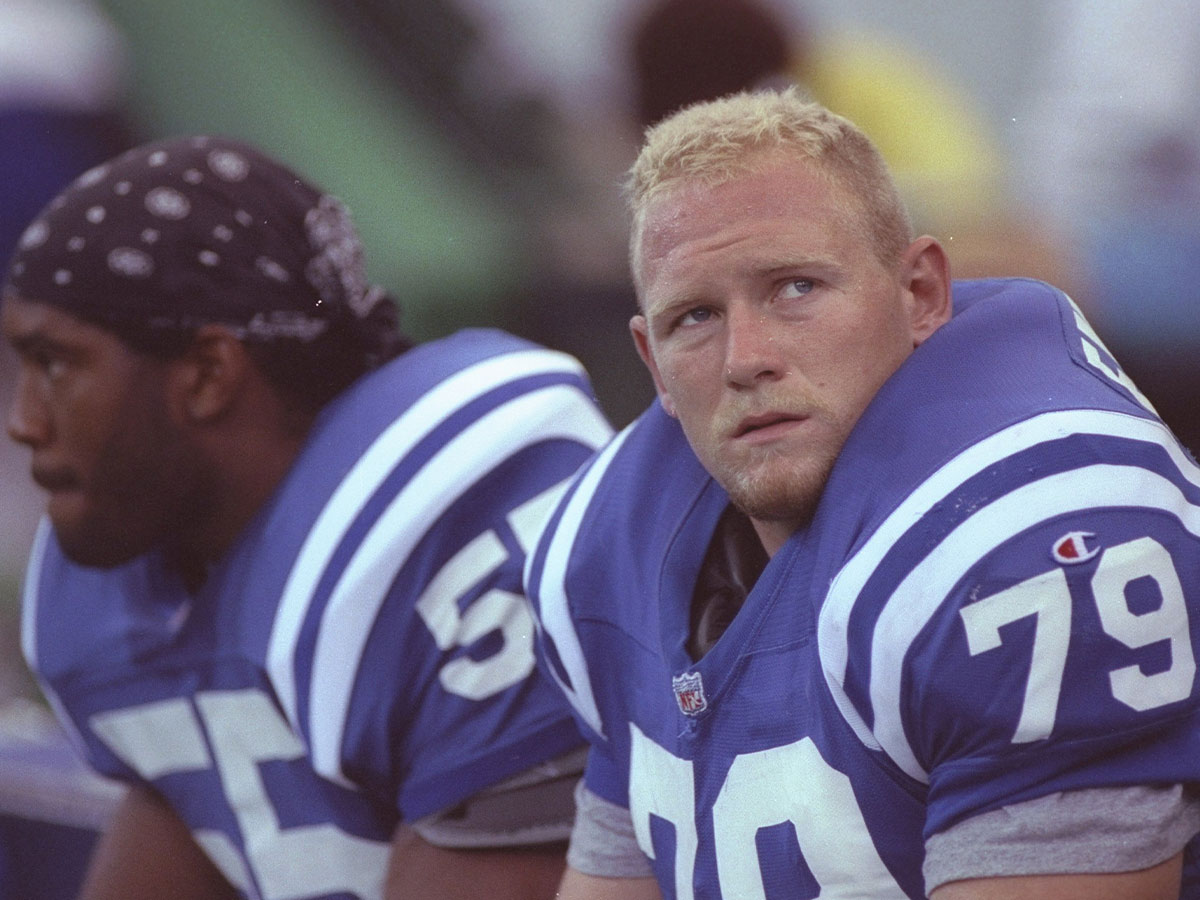
Some players who go high in the NFL Draft become memorable superstars, while others fade into infamy or obscurity. Unfortunately, Steve Emtman is one of those players people tend to forget about. Emtman decided to declare for the draft before his senior year at the University of Washington, and the Indianapolis Colts chose him as the first overall pick.
Injuries marred Emtman’s professional career, largely due to his having to play on artificial turf. In all three seasons with the Colts, he ended the year on the injured reserve list. Emtman went on to play with the Miami Dolphins and Washington Redskins, but he retired after six seasons at the age of 27. Who knows what kind of impact he could have made were it not for injuries?
Ty Detmer

Ty Detmer was a dominant quarterback at Brigham Young University. He set records for the most passing yards and most yards in total offense in a bowl game his sophomore year, and he won the Heisman Trophy his junior year. However, the first signs of trouble for his professional career came when scouts began to doubt him, and he fell in the NFL Draft to the ninth round.
Unlike many of the players on this list, Detmer had a long career in the NFL, spanning 14 seasons with six different teams. As impressive as this sounds, Detmer didn’t play much during that time as he didn’t play in any games for six of those seasons.
Gary Beban

Not many players can say that they beat a legend for the Heisman Trophy, but Gary Beban is one of the few who can. As quarterback for the UCLA Bruins, Beban had an impressive career, and he earned the nickname “The Great One.” Somehow he narrowly beat O.J. Simpson for the 1967 Heisman Trophy, one of many awards he won that year.
Beban went to the Los Angeles Rams in the second round of the 1968 NFL/AFL draft, but the Rams traded him to the Washington Redskins before the season began. He languished as the backup to future Hall of Famer Sonny Jurgensen, and he never got the chance to live up to the potential he demonstrated at UCLA. After being released in 1971, Beban retired.
John Huarte

Some players who shine in college don’t get the chance to prove themselves in the pros. John Huarte is one of those quarterbacks who wasn’t ever able to prove himself. Huarte played for the legendary Notre Dame Fighting Irish and won the Heisman Trophy his senior year in 1964, also winning a national championship.
Two professional leagues — the NFL and the AFL — drafted Huarte. He chose the AFL’s New York Jets, but he couldn’t get playing time when Joe Namath was the starter. He eventually moved over to the NFL, playing for the Philadelphia Eagles, Kansas City Chiefs, and Chicago Bears, but he was never able to win a starting role. He left the NFL in 1973 and played for the World Football League for two seasons before hanging up his cleats for good.
Honorable Mentions

We thought we should also recognize some other well-known busts as “Honorable Mentions" here. These are folks that didn’t quite make the list, but very well could have. Johnny Manziel, Jeff George, Andre Ware, David Klinger, Tim Tebow, Brady Quinn, Blair Thomas, Robert Griffin III, Kyle Boller, Roy Williams WR, Vince Young, Maurice Clarett, Courtney Brown, Andre Wadsworth...
Who else do you think should be on this list?
 Author
Ron Winkler
Last Updated: September 16, 2024
Author
Ron Winkler
Last Updated: September 16, 2024